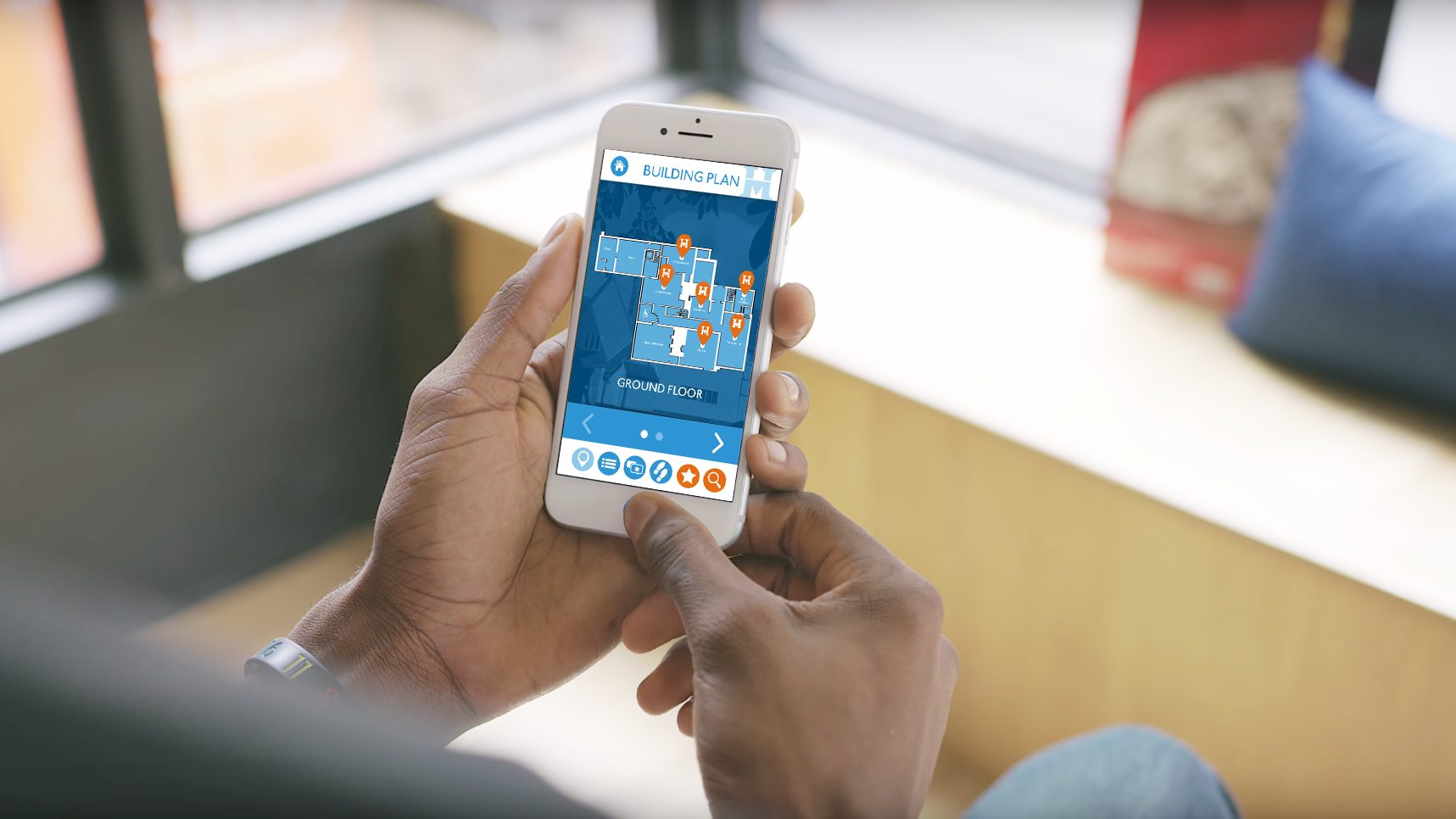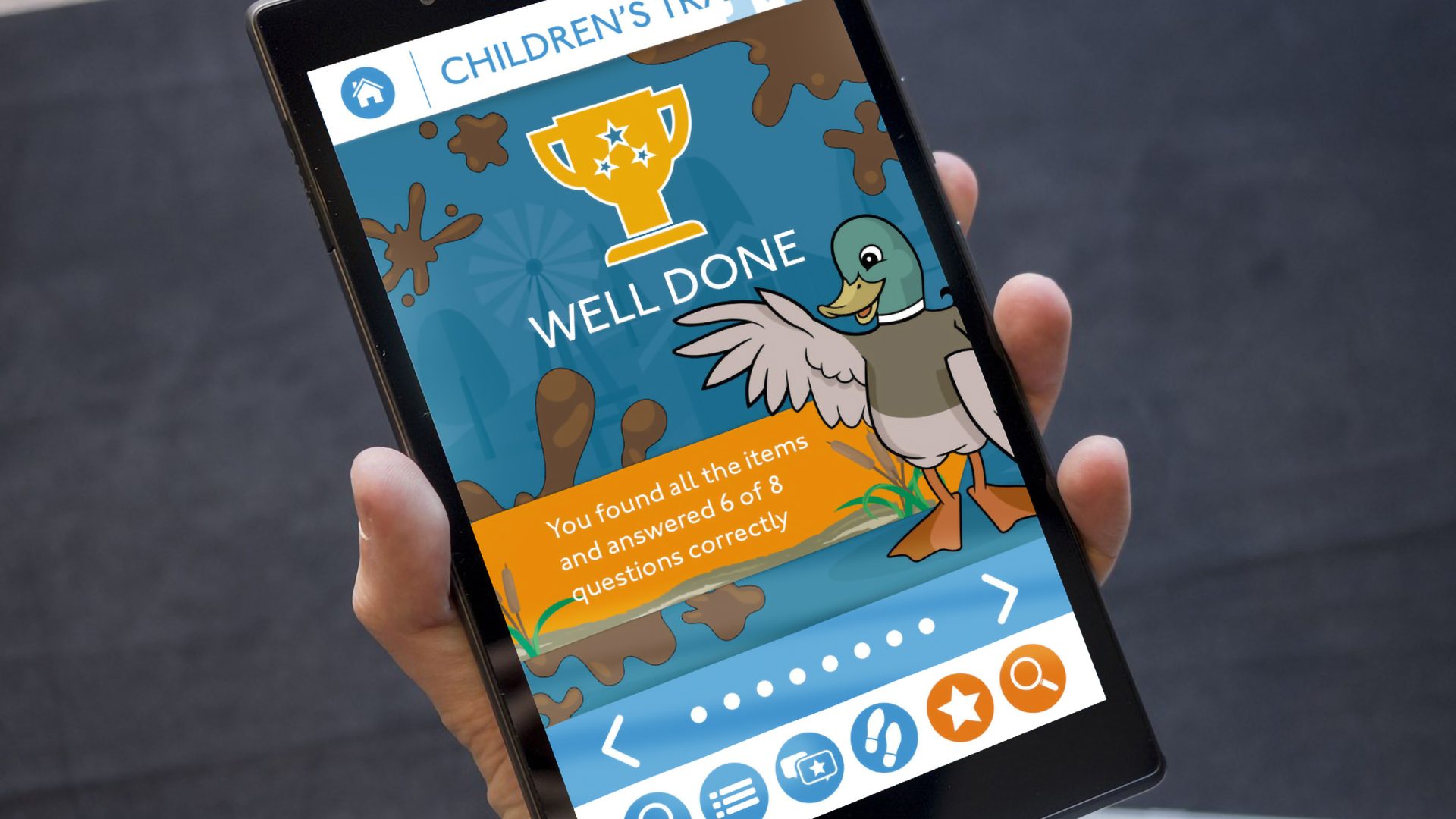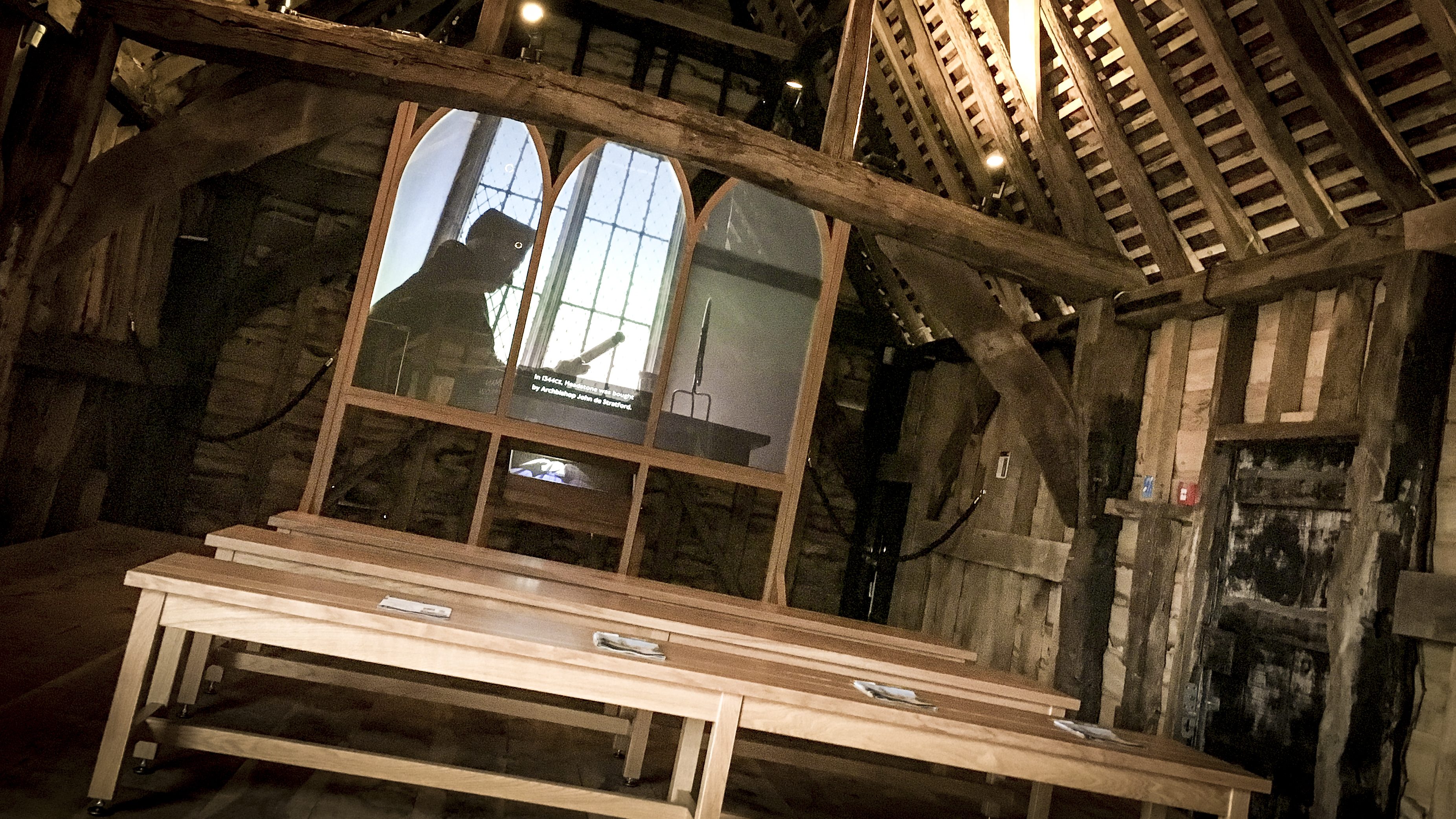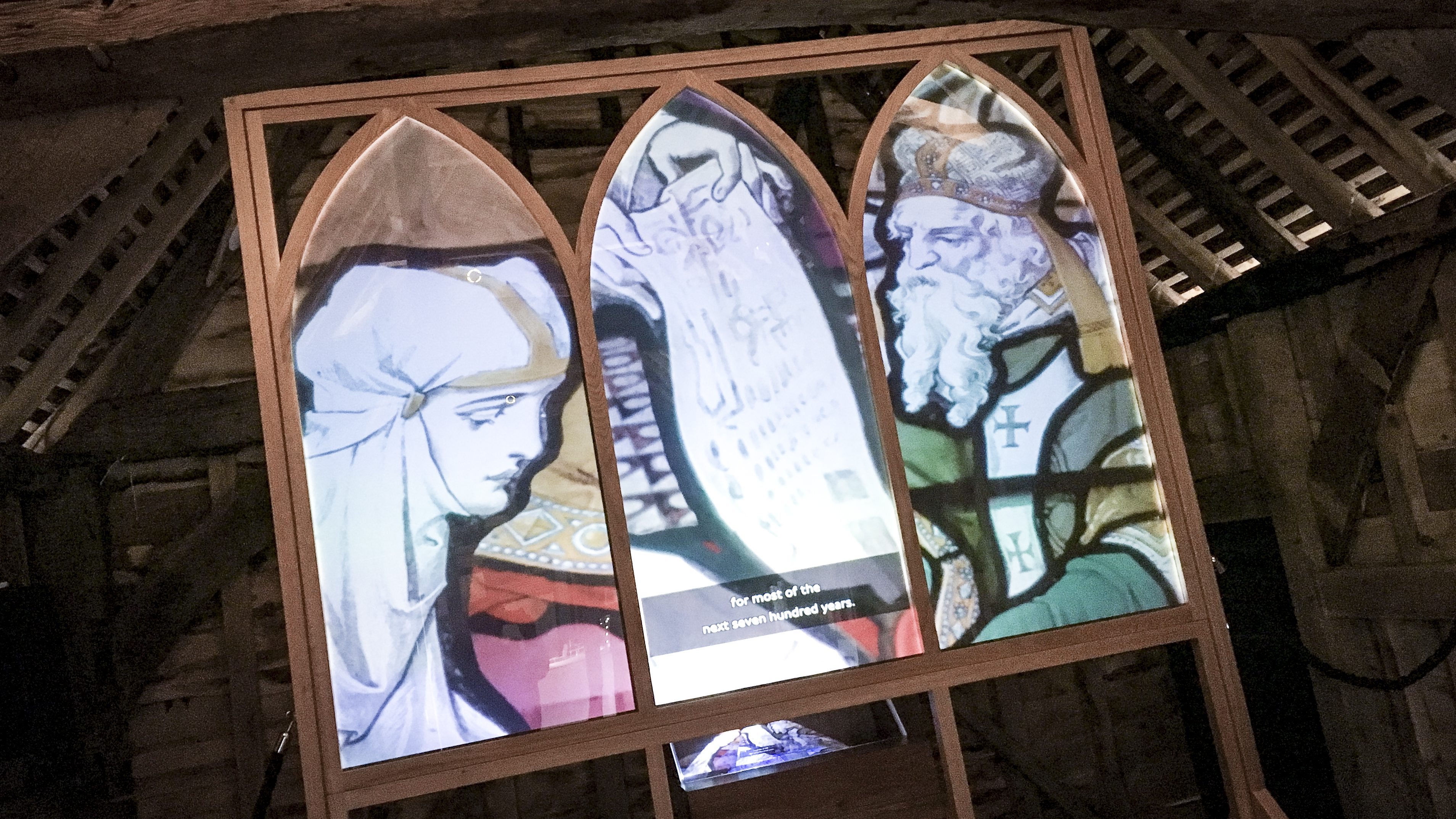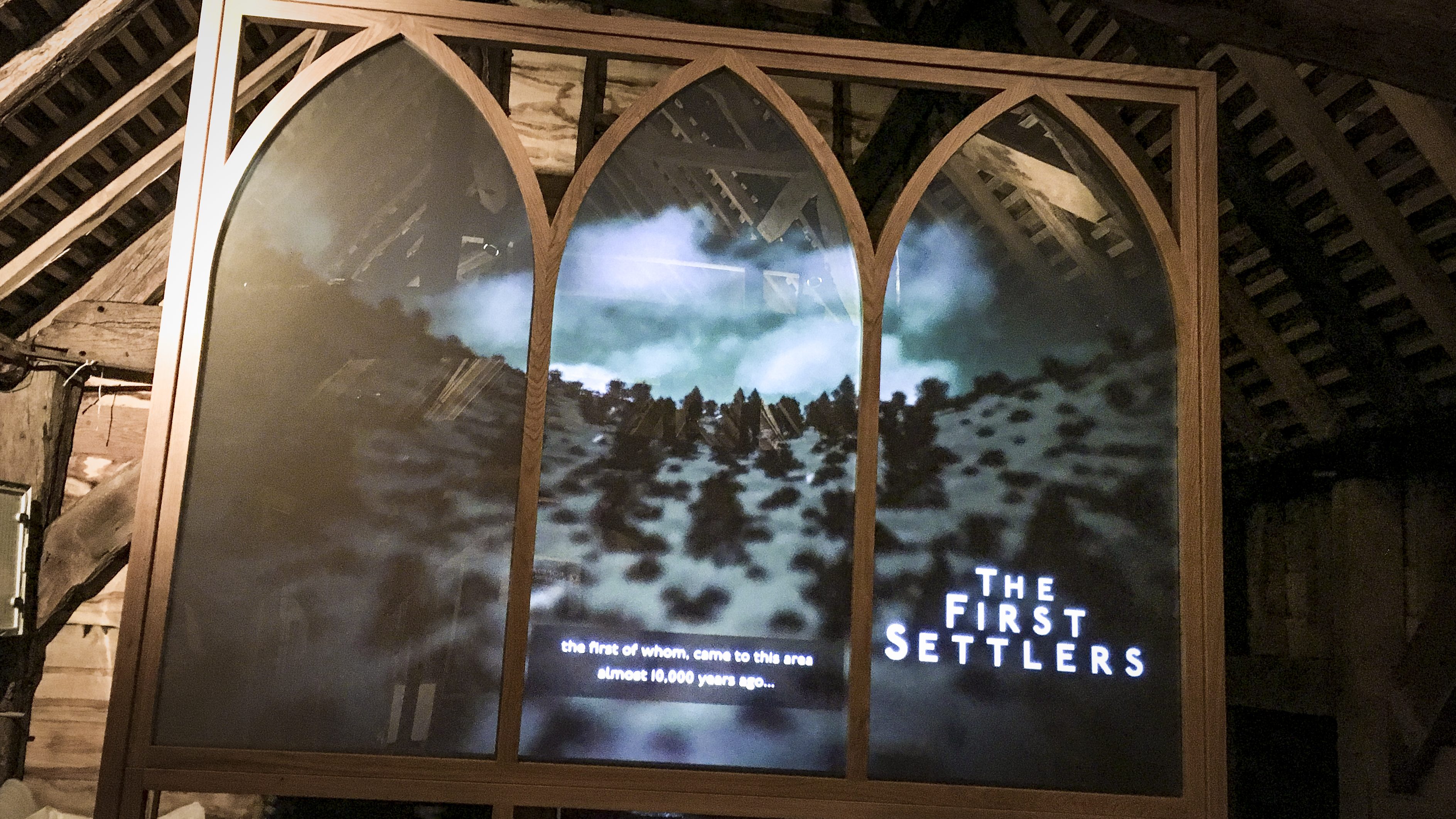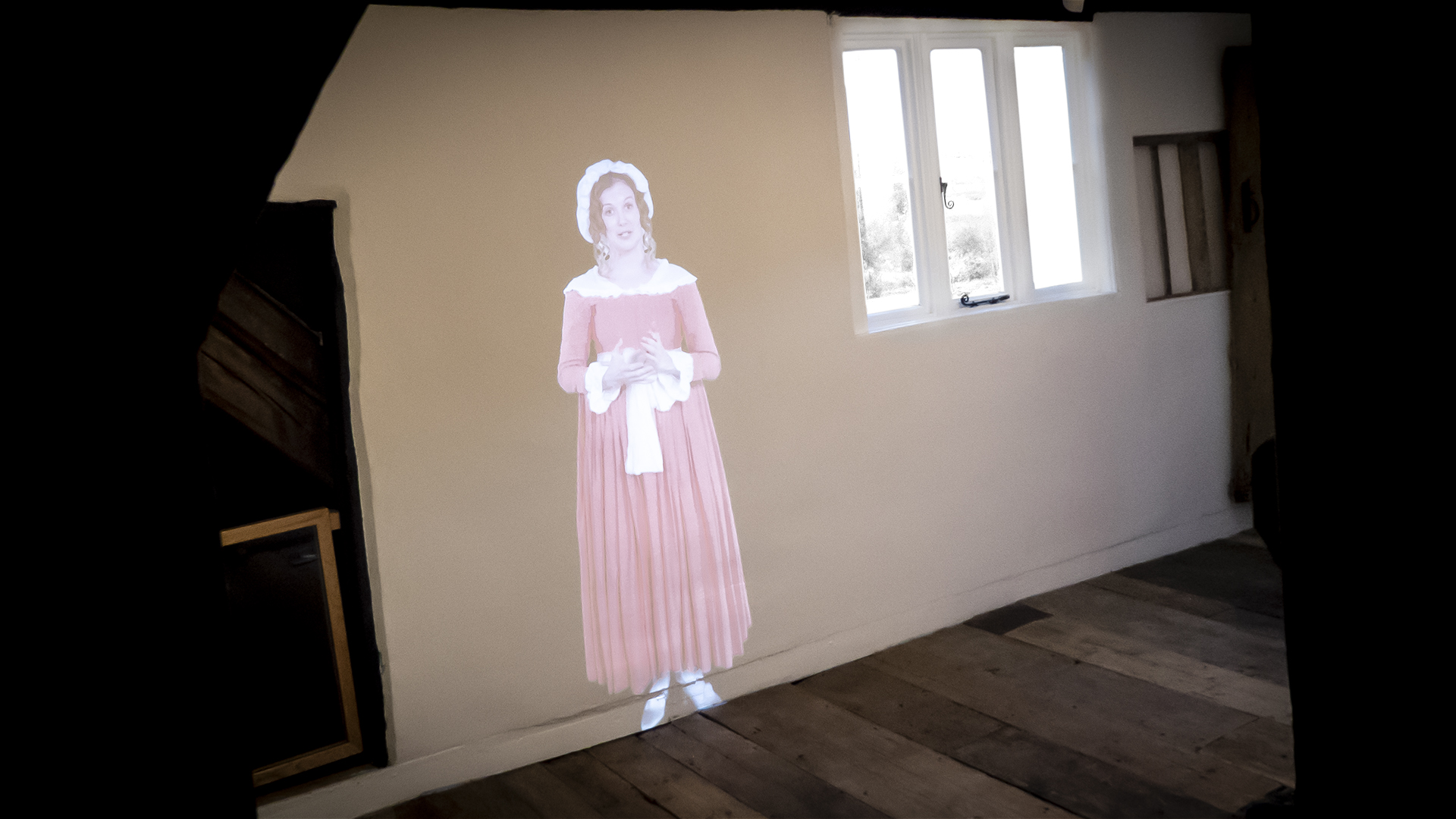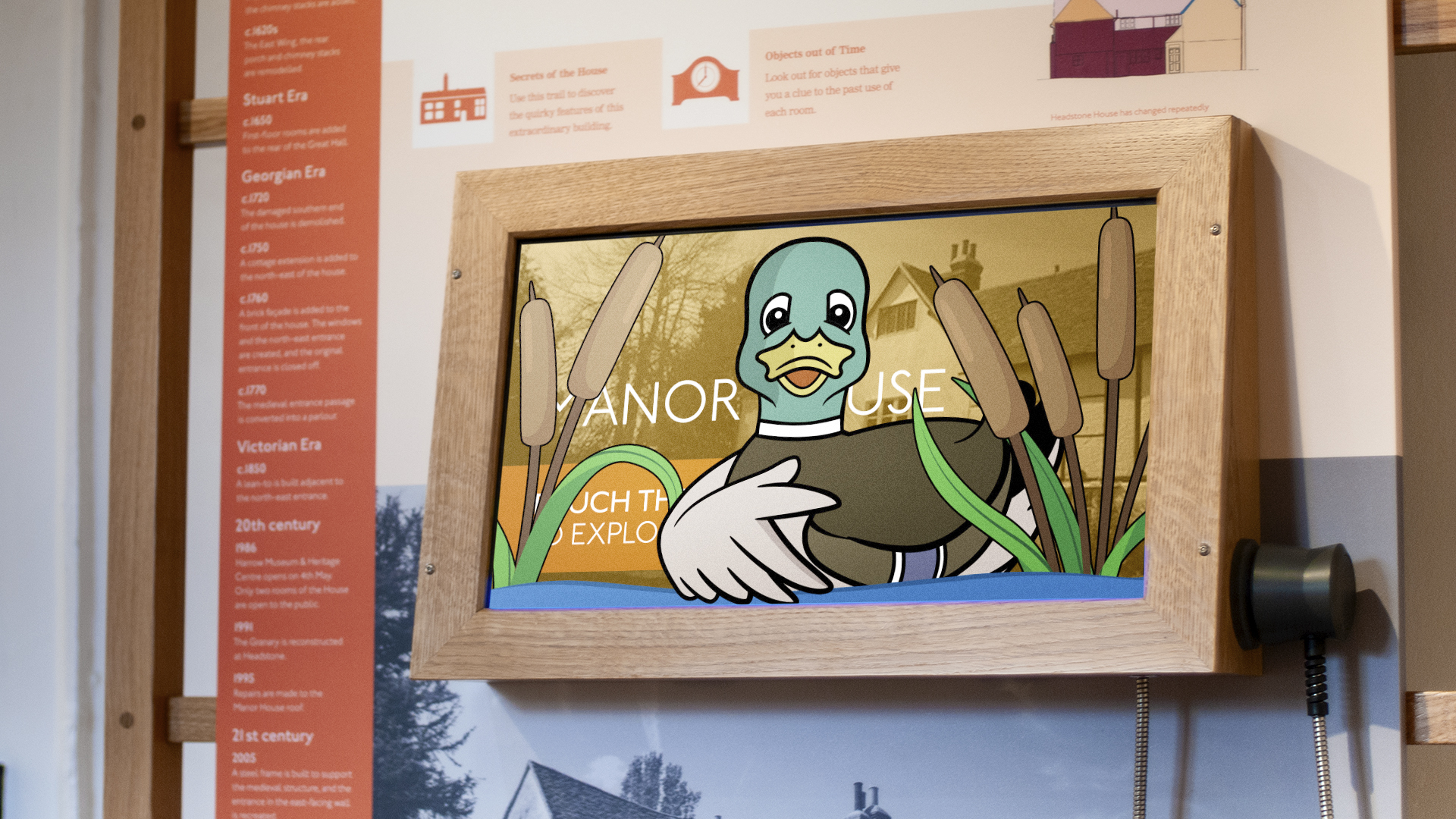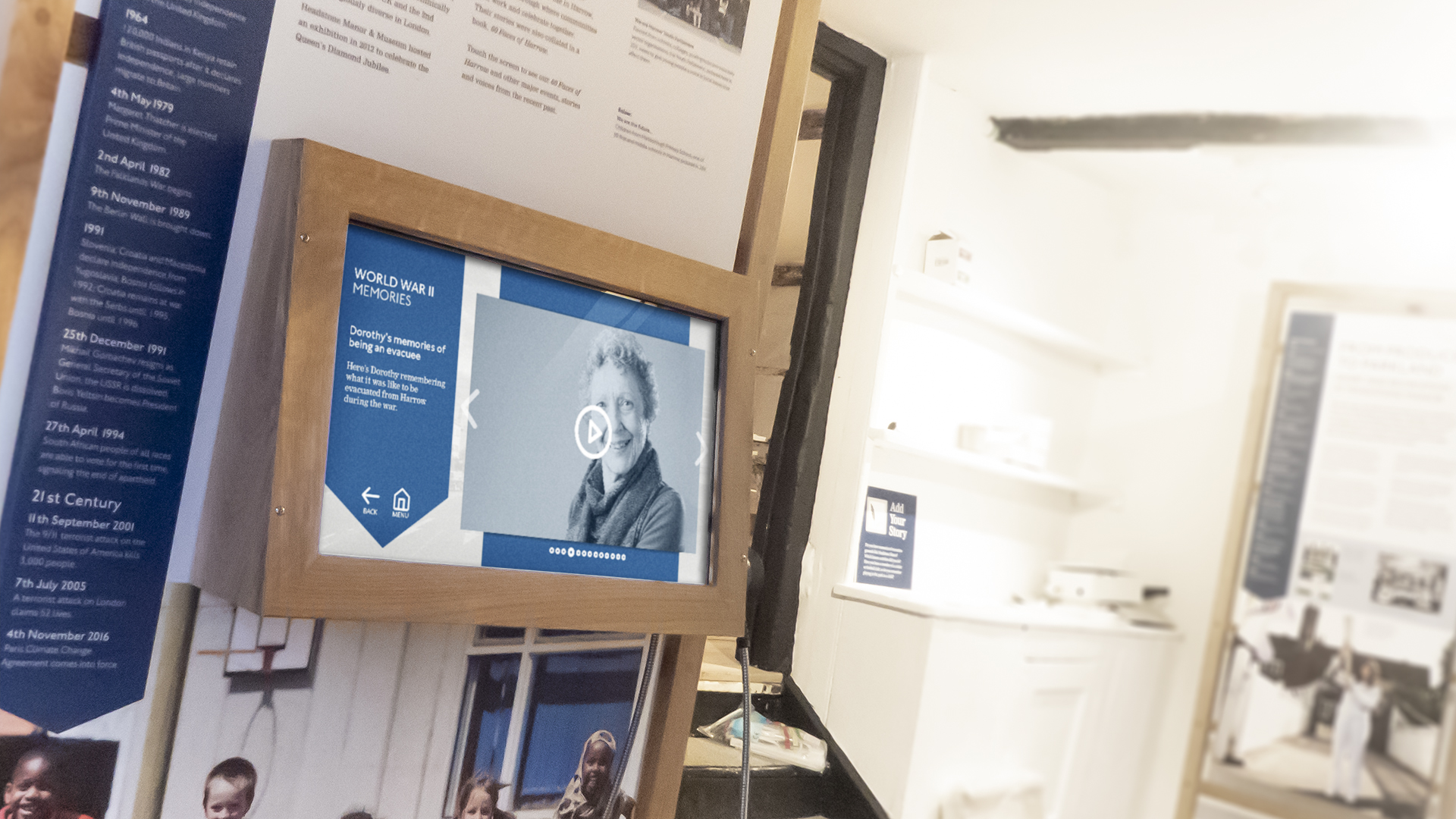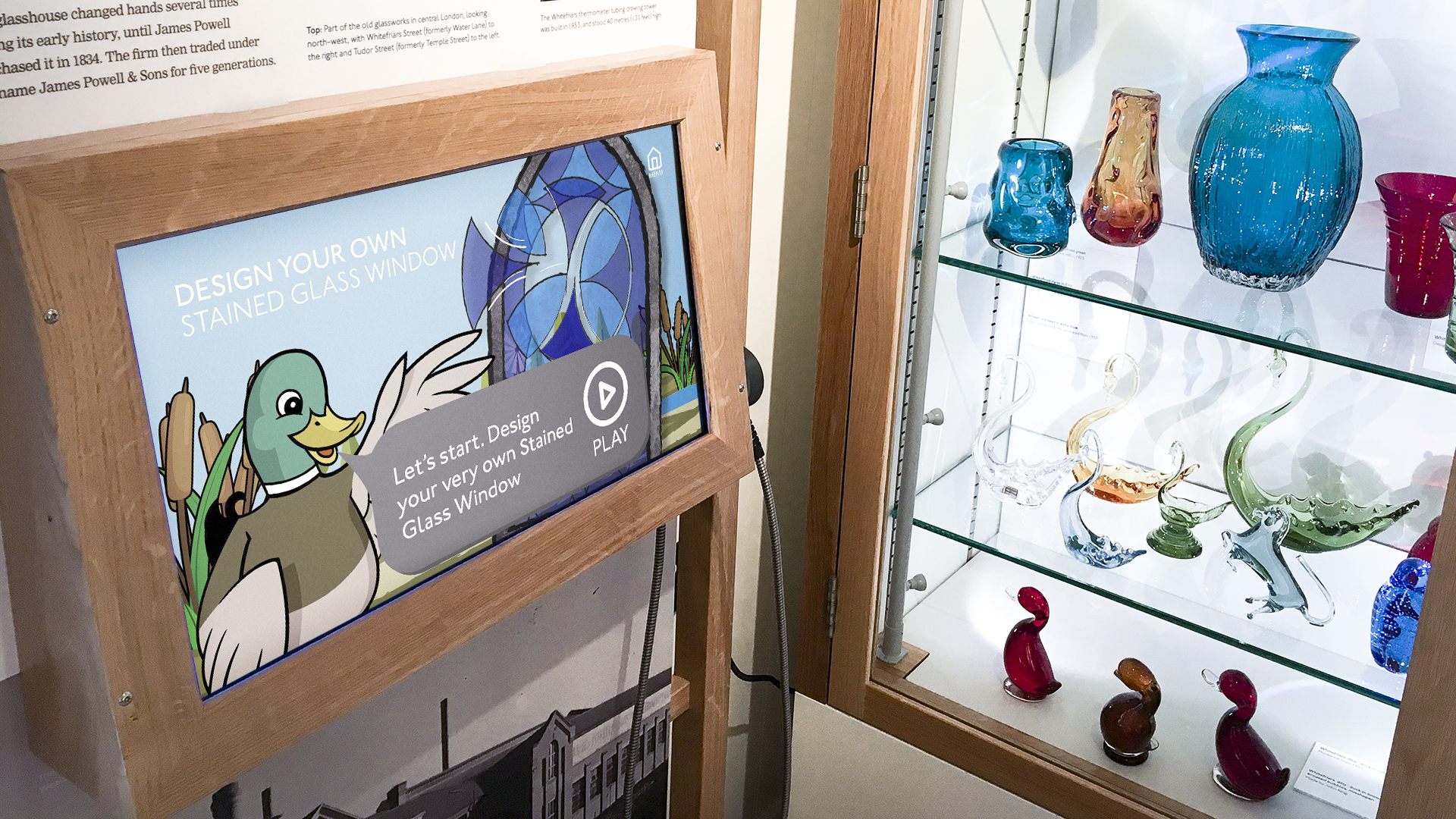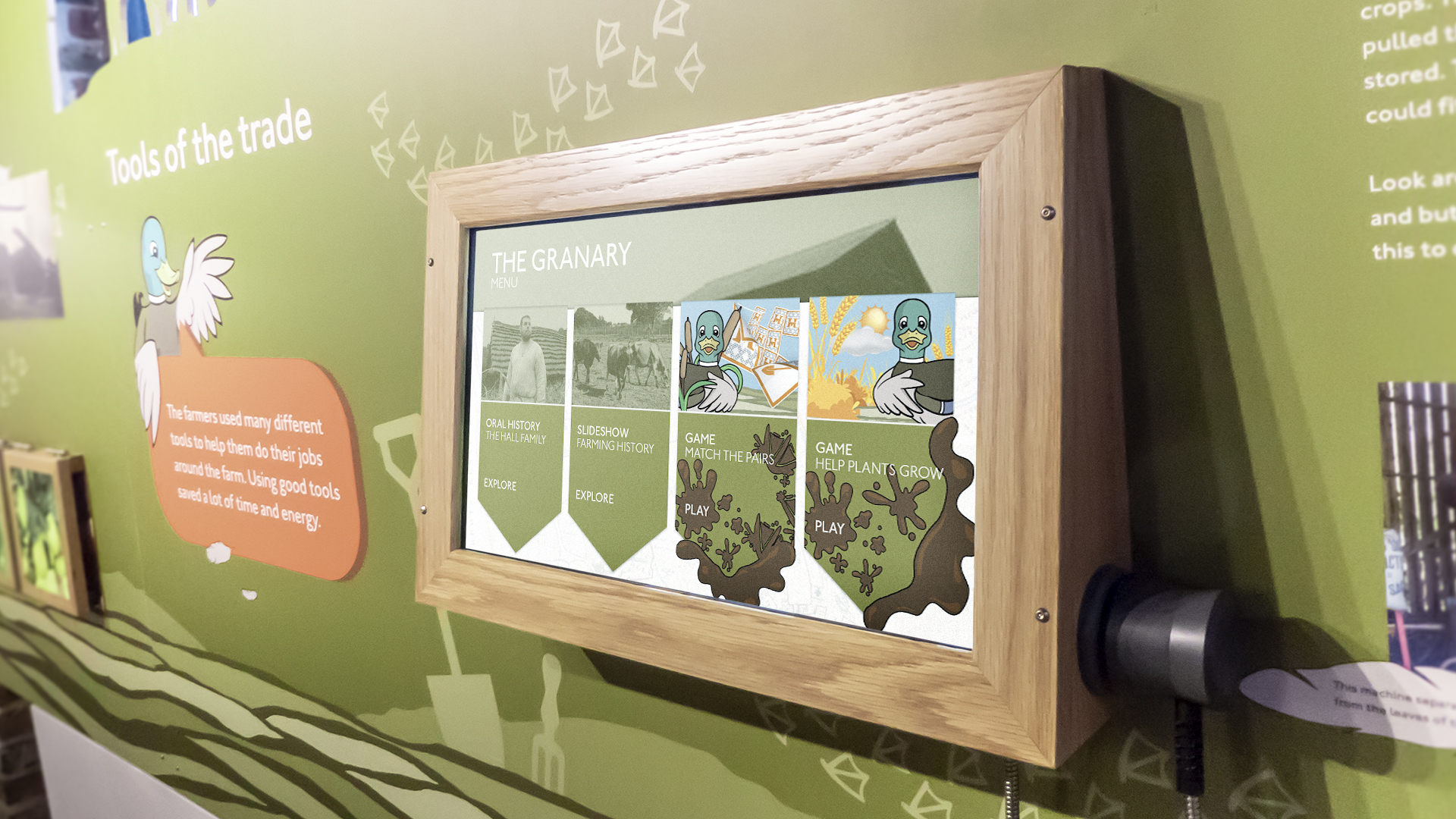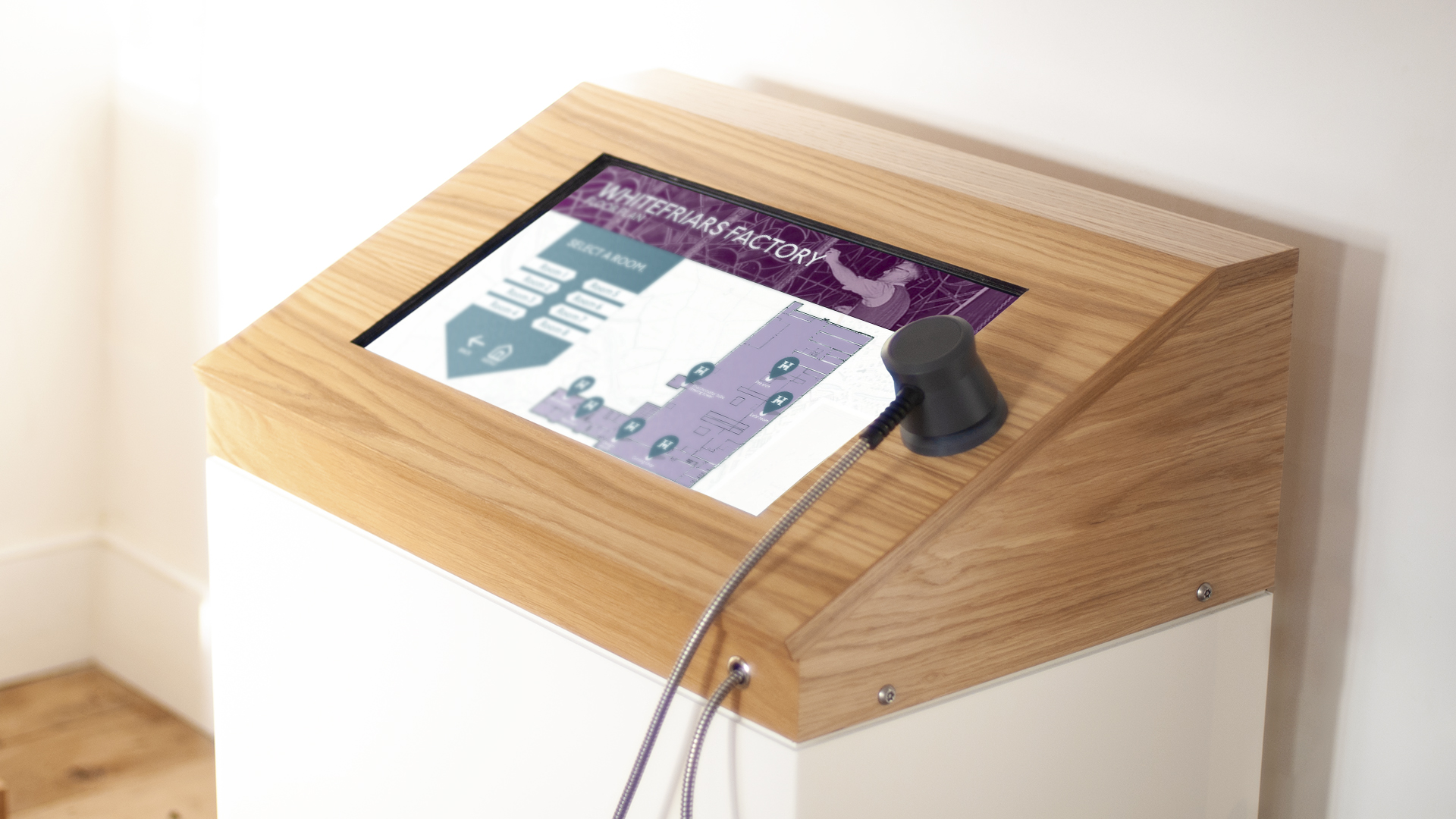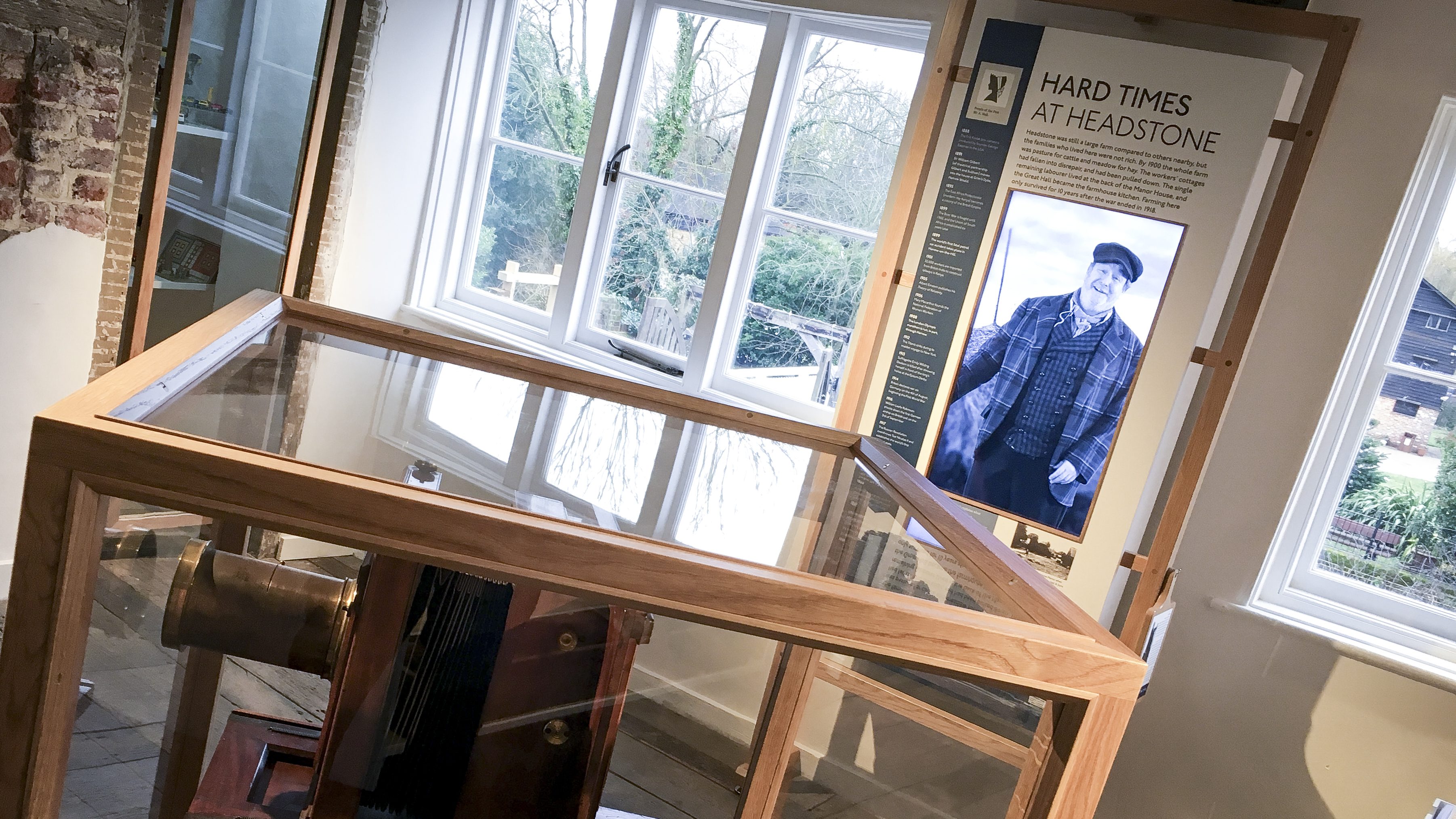Headstone Manor is part of Harrow Museum. Built around 1310, it is the earliest surviving timber framed building in Middlesex. It is surrounded by the only surviving filled moat in the county, dating from the14th century. It was a residence of the Archbishops of Canterbury until 1546 when it was surrendered to Henry VIII and sold to one of his court favourites, remaining in private ownership for nearly four centuries.
With dramatic extensions and changes made over the years Headstone Manor has notable features that include the panelling of the great hall dating from 1631 and the brick façade added in the 1770s. An outstanding complex of associated buildings is recognised through its designation as a Scheduled Ancient Monument.
Working with interpretive designers Imagemakers we delivered a range of immersive audiovisual and digital interactive exhibits and a web-app digital tour.

